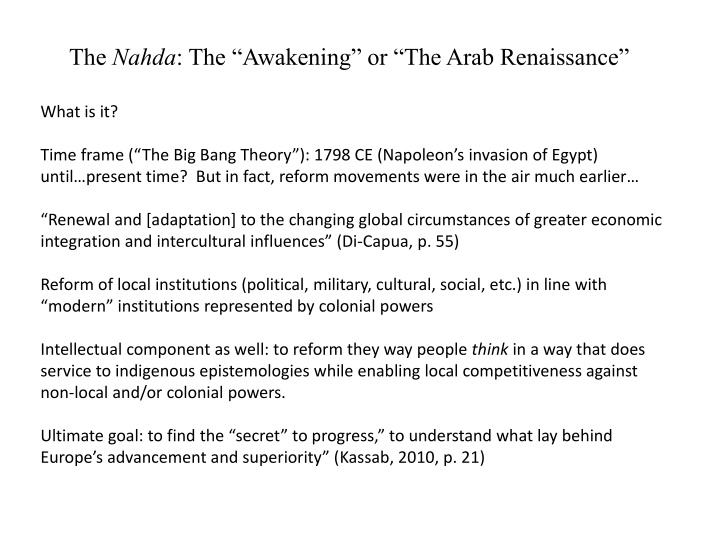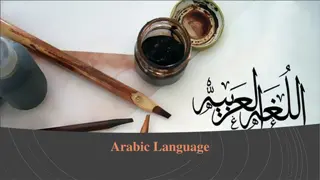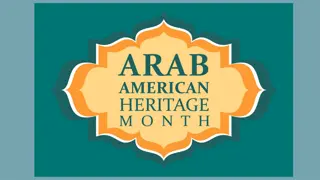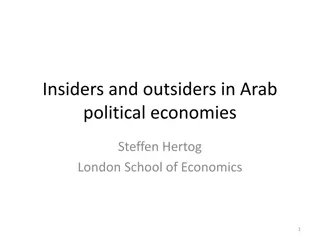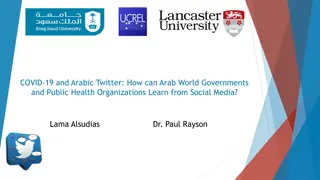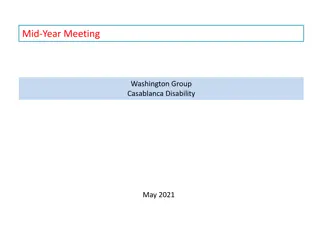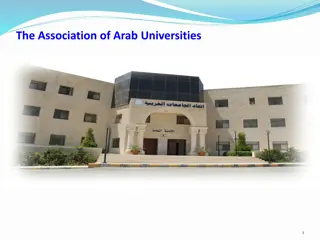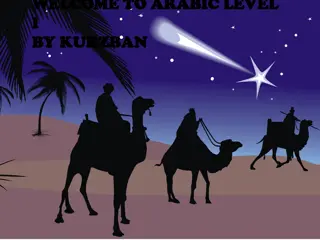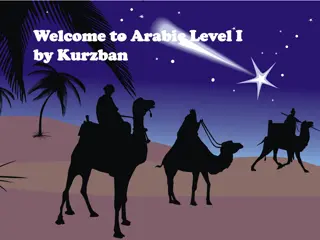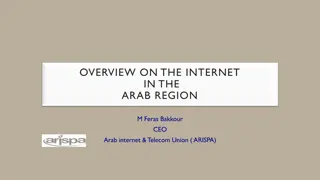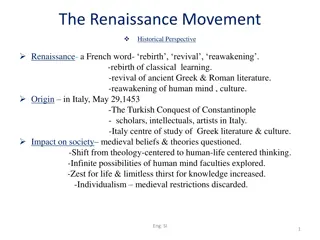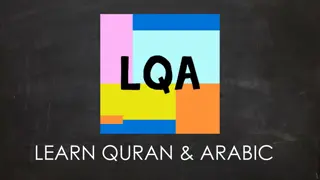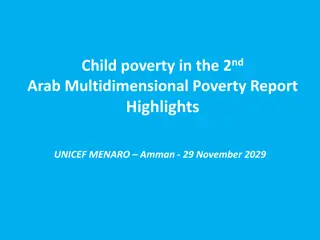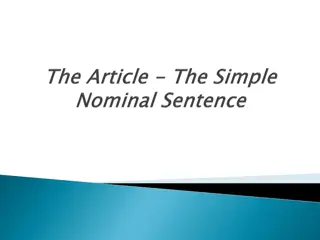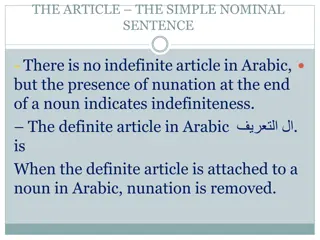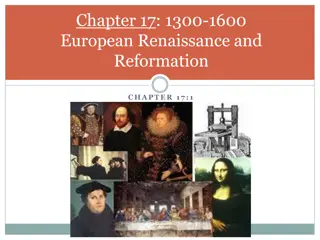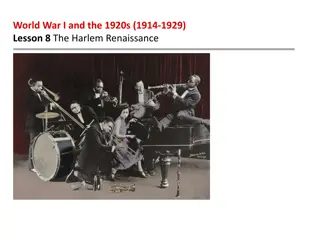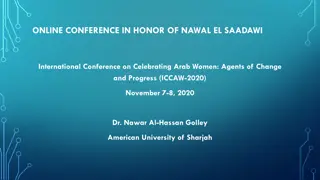Emerging Trends in Arab Renaissance and the Evolution of Arabic Literature
The Nahda, or Arab Renaissance, initiated in the late 18th century, marked a period of reform and adaptation in Arab societies, aiming to align with modern institutions and promote intellectual advancement. This movement sought to embrace progress, foster rationality, and understand civilization's rise and fall. The emergence of new social themes, such as individual expression, scientific empiricism, and increased literacy, brought about a transformation in Arab intellectual and literary spheres, leading to the rise of the Arabic novel and the development of a new journalistic language. These shifts reflected a commitment to European ideals of progress, rationality, and historical understanding within Arab intellectual circles.
Download Presentation

Please find below an Image/Link to download the presentation.
The content on the website is provided AS IS for your information and personal use only. It may not be sold, licensed, or shared on other websites without obtaining consent from the author.If you encounter any issues during the download, it is possible that the publisher has removed the file from their server.
You are allowed to download the files provided on this website for personal or commercial use, subject to the condition that they are used lawfully. All files are the property of their respective owners.
The content on the website is provided AS IS for your information and personal use only. It may not be sold, licensed, or shared on other websites without obtaining consent from the author.
E N D
Presentation Transcript
The Nahda: The Awakening or The Arab Renaissance What is it? Time frame ( The Big Bang Theory ): 1798 CE (Napoleon s invasion of Egypt) until present time? But in fact, reform movements were in the air much earlier Renewal and [adaptation] to the changing global circumstances of greater economic integration and intercultural influences (Di-Capua, p. 55) Reform of local institutions (political, military, cultural, social, etc.) in line with modern institutions represented by colonial powers Intellectual component as well: to reform they way people think in a way that does service to indigenous epistemologies while enabling local competitiveness against non-local and/or colonial powers. Ultimate goal: to find the secret to progress, to understand what lay behind Europe s advancement and superiority (Kassab, 2010, p. 21)
What makes a civilization superior (adapted from Kassab, 2010, pp. 20-22)? Five thematic responses: 1. The Rise and Fall model of civilizations (< Ibn Khaldun) 2. Political justice 3. Science 1. Religion 2. Gender
How do these social themes relate to the emergence of the novel? Greater scope for individual expression Scientific empiricism Greater degree of literacy: by 1880 s, schools, libraries, daily and periodical presses, and theaters in Syria/Lebanon (Di-Capua, p. 59) New class of Arab civil bureaucracy (Di-Capua, p. 57) = emergent middle class in Europe? - rise of civil bureaucrats comes at the expense of religious authorities - rise of a modern professional class in Egypt (the effendiyya), 1882-1900 (Di-Capua, p. 63) - the emergence of the modern Arab intellectual, a new type of activist thinker speaking the new journalistic language of public Arabic (Di-Capua, p. 64). Al-Tahtawi: [Clarity] of language is a pre-condition for sound reasoning (Di-Capua, p. 58) - effort to develop a new journalistic language that was precise, clear, and free from the complexities of Classical Arabic (Di-Capua, p. 59) Greater scope for public intellectual life for Arab women, including literary activity (Di- Capua, p. 66) presumably written from a different perspective than that of their male counterparts.
Whatever we might choose to call this yet nameless Nahda front, it was clearly committed to four fundamental traits of mid- nineteenth-century European thought: first, a belief in the idea o progress and its dependence on scientific and technological mindedness; second, an unflinching belief in the power of rationality and its positivist and empirical mindset; third, the adoption of a historicist habit of mind, or the realization that objects become intelligible only by grasping them as part of a causal process of development; and fourth, acceptance of the notion that civilization exists in two fundamental states: rise or decline (Di-Capua, p. 61). How could these traits relate to the emergence of the Arabic novel?
Finally In sum, during this era Arabs established a space between the individual and the colonial state. Within this space, public opinion was formed and processed into civic action. By practice, if not by name, it was a secular sphere (Di-Capua, p. 67). How does this relate to the emergence of the Arabic novel?
